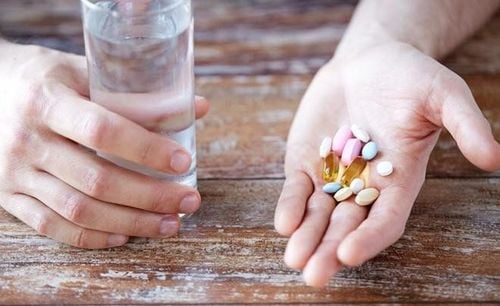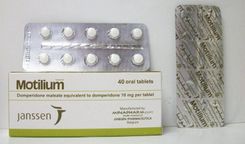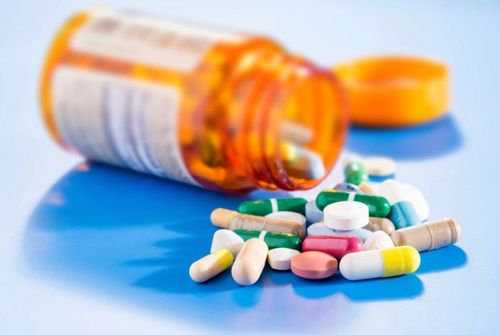This is an automatically translated article.
Cefpodoxime has the active ingredient cefpodoxime. The product is usually prepared in the form of Cefpodoxime 100mg in sachets, powder for suspension, each pack contains 3g.
1. Indications / contraindications to the use of Cefpodoxime
Cefpodoxime is indicated in the following cases:
Treatment of mild to moderate diseases of the lower respiratory tract such as acute pneumonia, chronic bronchitis; Treatment of mild and moderate upper respiratory tract infections (sore throat, tonsillitis); Treatment of acute otitis media; Treatment of mild and moderate urinary tract infections, uncomplicated (cystitis); 1 dose of 200mg Cefpodoxime is used to treat acute gonorrhea, uncomplicated, appearing in the endometrium or anus - rectum, urethra; Treatment of mild to moderate infections, uncomplicated skin and skin tissues. Cefpodoxime is contraindicated for the following cases:
People who are allergic to cephalosporins; People with porphyria.
2. How to take Cefpodoxime 100mg
The drug is taken orally. The patient pours the entire amount of powder in the package into a cup, adds about 5ml of cooled boiled water, stirs well, and immediately drinks the resulting suspension. The drug can be taken with or without food.

Thuốc cefpodoxim 100 được dùng trong một số trường hợp nhiễm khuẩn
3. Dosage of Cefpodoxime 100mg
Drug dosage depends on the target users. Specific:
3.1 Adults and children 13 years of age and older Treatment of acute exacerbations of chronic bronchitis or mild to moderate acute pneumonia: 200mg/time/12 hours for 10 or 14 days corresponding; Pharyngitis or tonsillitis, mild to moderate, mild or moderate urinary tract infections, uncomplicated: 100mg/time/12 hours, used for 5-10 days or 7 days respectively; Mild and moderate skin and skin tissue infections, uncomplicated: 400mg/time/12 hours, used for 7-14 days; Uncomplicated urethral gonorrhea, anal-rectal gonorrhea, endometriosis: Take 1 dose of 200mg, then treat with oral doxycycline. 3.2 Children Acute otitis media in children from 5 months to 12 years old: Dose of 5mg/kg (maximum 200mg)/time/12 hours or 10mg/kg (maximum 400mg)/time/day, used for 10 days; Bronchitis, mild and moderate tonsillitis in children from 5 months to 12 years old: 5mg/kg (maximum 100mg)/time/12 hours, used for 5-10 days; Other infections: Children under 15 days old: Not recommended; Children from 15 days to 6 months old: 8mg/kg/day, divided into 2 times/day; Children from 6 months to 2 years old: 40mg/kg/time, divided into 2 times/day; Children from 3 to 8 years old: 80mg/time, divided into 2 times/day; Children over 9 years old: 100mg/time, divided into 2 times/day. 3.3 Patients with renal impairment The dose of Cefpodoxime should be reduced depending on the degree of renal failure. For patients with creatinine clearance less than 30ml/min, who are not on hemodialysis, the usual dose should be given every 24 hours. For patients with renal failure undergoing hemodialysis, the usual dose is 3 times/week.
Note: Dosage is for reference only. The patient will be prescribed the dose of the drug by the doctor based on the condition and the progress of the disease.
Overdose: Symptoms of overdose of Cefpodoxime may include: Nausea, vomiting, epigastric pain, diarrhea. In case of an overdose, the patient should call 911 or go to the nearest hospital immediately. Management is gastric lavage, supportive or symptomatic. If a severe toxic reaction occurs, the patient may require hemodialysis or peritoneal dialysis to remove cefpodoxime from the body.
Missed dose: If you forget to take a dose of Cefpodoxime, you should take it as soon as you remember. If it is almost time for the next dose, skip the missed dose and take the next dose at the scheduled time.

Thuốc cefpodoxim 100 cần được dùng theo đúng hướng dẫn
4. Side effects when taking Cefpodoxime
When using Cefpodoxime, patients may experience some unwanted side effects:
Common: Nausea, vomiting, abdominal pain, diarrhea, headache, rash, urticaria, itchy skin ,...; Uncommon: Red skin rash, fever, arthralgia, anaphylactic reactions, liver enzyme disorders, hepatitis, transient cholestatic jaundice; Rare: Blood disorders, reversible interstitial nephritis, agitation, confusion, trouble sleeping, dizziness,... When experiencing the above side effects, patients should stop treatment with Cefpodoxime and Notify your doctor immediately.
5. Be careful when using Cefpodoxime
Some notes before using Cefpodoxime:
Before starting treatment with Cefpodoxime, it is necessary to carefully consider the patient's allergy history to Cefpodoxime, penicillin and other drugs; Use caution when using the drug with people sensitive to penicillin, renal insufficiency, pregnant and lactating women. Cefpodoxime is secreted in breast milk, can cause intestinal dysbacteriosis in nursing infants, affect the child's body functions, and falsify the results when making antibiotics. Drug interactions: The drug is well absorbed in an acidic environment, less absorbed when the gastric pH increases. Therefore, consider taking Cefpodoxime with an antacid (a substance that reduces secretion or neutralizes stomach acid).
Cefpodoxime is an antibiotic belonging to the cephalosporin group, which works by preventing the growth of bacteria, helping to treat pneumonia, bronchitis, pharyngitis, otitis media,... doctor's instructions to ensure the best treatment effect. If you experience side effects while using the drug, you should notify your doctor immediately for timely intervention.
Follow Vinmec International General Hospital website to get more health, nutrition and beauty information to protect the health of yourself and your loved ones in your family.
Please dial HOTLINE for more information or register for an appointment HERE. Download MyVinmec app to make appointments faster and to manage your bookings easily.













